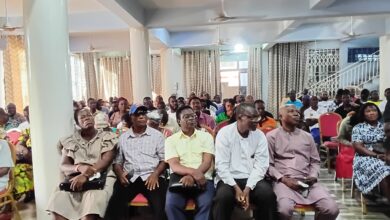
Ghana’s debt is set to hit about 72.4% of GDP by the year of the year, ratings agency Moody’s has predicted.
According to Moody’s, Ghana’s debt will reach 72.4 percent of GDP by the end of this year, before declining to 68.9 percent by end-2019.
This level is higher than previously anticipated due to the 2.6 percent of GDP costs associated with the formation of the Consolidated Bank, coupled with the 0.9 percent of GDP costs associated with the resolution of UT and Capital Banks.
“Ghana’s large debt stock, low debt affordability and exposure to foreign exchange-related valuation changes underpin our ‘Very Low (-)’ assessment of its fiscal strength, a key constraint to the sovereign’s credit profile,” it said in its review of the banking sector reforms.
Last week the Bank of Ghana consolidated the deposits, other systemic liabilities and viable assets of five insolvent banks into a new, wholly government-owned bank called Consolidated Bank Ghana Limited.
Government capitalised the bank with GH¢450million – 0.2percent of GDP, and endowed it with a GH¢5.76 billion bond – US$1.2billion or 2.4 percent of GDP, to cover the gap between the liabilities and viable assets it has assumed. Government intends to offload its shares within a period of two years to the Ghanaian public.
The creation of Consolidated Bank, Moody’s notes, supports financial stability when the commercial banking system faces high asset risks and is in the process of consolidating to meet new capital requirements of GH¢400million minimum by the end of this year from the previous GH¢120million.
An analysis of the cost from the seven banks’ collapse shows that the taxpayer will cough up a minimum of GH¢8billion – GH¢5.76billion – with respect to the bond issued to cushion Consolidated Bank and the GH¢2.2billion government doled out to settle the liabilities of UT and Capital Banks.
While the central bank is insistent that the cost of the seven banks’ collapse will not be added to the country’s total public debt under a special arrangement made with the International Monetary Fund (IMF), there is no denying that the cost of financial sector cleansing will be borne by Ghanaians.
Head of Banking Supervision at the central bank, Mr. Osei-Gyasi, earlier this year – commenting on the GH¢2.2 billion bond issued at a coupon rate of 12 percent to cater for the liabilities of UT-Capital Banks – said such losses are the reason the central bank must always step in quickly and sanction banks to prevent taxpayers from bearing the cost of collapses.
It is not immediately known at what coupon rate and tenor government issued the latest GH¢5.76billion bond to clean up the mess caused by the five banks, but any rate in the region of 12 percent – as was the case with the first bond – would worsen the taxpayer’s burden.
The BoG Governor, at the last MPC meeting in July, revealed that so far about 15 banks are in line to meet the minimum capital requirement – a situation that means about 15 other banks may still be in the woods, with the regulator not ruling out cracking the whip once more when necessary.
As of May this year, according to data from the central bank, Ghana’s public debt had ballooned to GH¢154billion, representing 63.8 percent of GDP from GH¢137.3billion in May 2017, representing 67 percent of GDP – excluding the Energy bond of GH¢4.7billion.
Source ; Joynews



